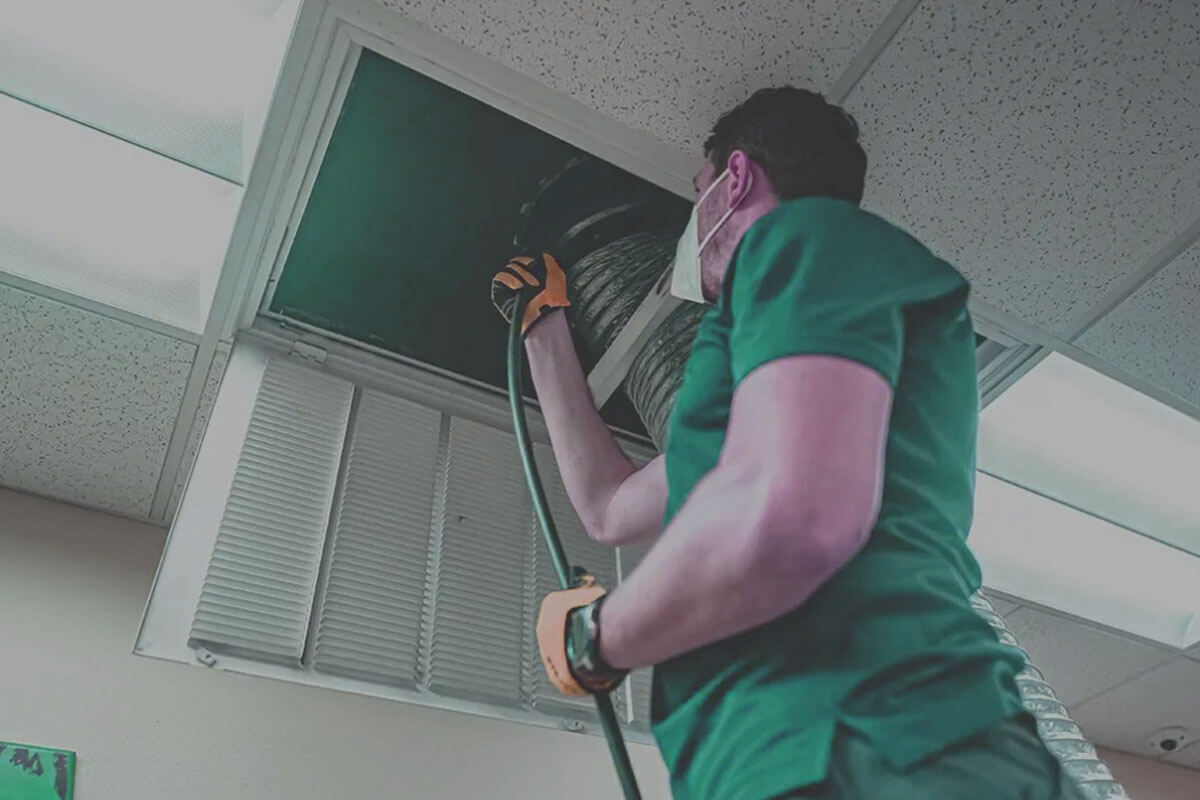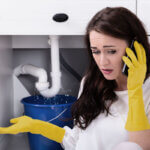Dirty air ducts health problems range from respiratory issues to unexplained fatigue, but the science shows these concerns are more complex than many realize. While contaminated ductwork can harbor allergens, mold, and bacteria, the EPA states that routine duct cleaning doesn’t prevent health problems unless specific contamination exists. Understanding when polluted air systems actually pose risks helps you make informed decisions about your home’s indoor air quality.
- Dirty Air Ducts Health Problems: What Science Really Says
- Common Symptoms Linked to Contaminated Air Ducts
- When EPA Says Duct Cleaning Is Actually Necessary
- Modern Indoor Air Quality Concerns and Mycotoxin Exposure
- How to Inspect Your Ducts and Decide What to Do
- Safe Cleaning Practices and Choosing the Right Professional
- Preventing Future Duct Contamination
Dirty Air Ducts Health Problems: What Science Really Says
The connection between duct contamination and health isn’t as straightforward as many believe. Studies show that duct cleaning has never been proven to prevent health problems, and particle levels in homes don’t necessarily increase because of dirty air ducts.
Much of the dirt in air ducts sticks to duct surfaces and doesn’t enter your living space. The EPA emphasizes that pollutants from cooking, cleaning, smoking, and outdoor sources typically cause greater exposure to contaminants than contaminated air ducts. However, when ducts contain visible mold growth, pest infestations, or substantial debris, they can become genuine hidden health threats. Research from the National Air Duct Cleaners Association found that ducts not cleaned for three or more years contained up to 40 pounds of dust and debris. Recent 2024 studies reveal that HVAC systems can be a source of mycotoxin contamination, reinforcing the relevance of further studies in healthcare settings. The key lies in distinguishing between normal dust accumulation and actual contamination that requires action.
Common Symptoms Linked to Contaminated Air Ducts
When building ventilation systems are genuinely contaminated, they can trigger noticeable health symptoms. Common signs include persistent coughing, sneezing, sore throat, congested nose, and itchy or watery eyes.
Family members with asthma or allergies often experience worsened symptoms at home but not elsewhere when dirty ducts circulate allergens. Respiratory infections can develop when bacteria and viruses circulate through mold-infested ducts. Over 35 million Americans are diagnosed with sinusitis annually, often caused by infections triggered when dirt, debris, and pet dander inflame nasal passages. You might also notice unexplained fatigue and a general feeling of being unwell at home. When air quality is compromised, your body struggles to get pure air, leading to tiredness and potentially speeding up aging processes. Skin allergies like eczema, rashes, and hives can flare up when contaminated air circulates throughout your home air circulation networks. The American College of Allergy, Asthma, and Immunology reports that 50% of all illnesses are caused or aggravated by polluted indoor air.
When EPA Says Duct Cleaning Is Actually Necessary
The Environmental Protection Agency recommends duct cleaning only in specific situations, not as routine maintenance. You should consider cleaning if there’s substantial visible mold growth inside hard surface ducts or other heating and cooling system components.
If insulated air ducts get wet or moldy, the insulation cannot be effectively cleaned and should be removed and replaced. Pest infestations also warrant immediate cleaning—rodents, insects, or birds nesting in air passages create serious health risks. Look for droppings, unusual odors, or visible signs of animal activity. Additionally, cleaning becomes necessary when ducts are clogged with excessive dust and debris that’s visibly released from supply vents. After major renovations, especially asbestos removal or lead paint stripping, ducts often fill with harmful debris requiring professional removal. Remember that cleaning won’t help if you don’t address the root cause—moisture problems must be fixed to prevent mold from returning. The contrast between clean air ducts and contaminated systems becomes apparent when pristine ventilation systems maintain proper airflow without distributing pollutants.
Modern Indoor Air Quality Concerns and Mycotoxin Exposure
Today’s homes face new air quality concerns that make duct inspection more important than ever. With homes sealed tightly during winter months, pollutants get trapped indoors, and dirty ducts can worsen this problem.
Indoor air pollution can be 2 to 5 times higher than outdoor levels, and sometimes as high as 100 times worse. The concentration keeps increasing due to energy-efficient homes that lack sufficient ventilation (from Latin ventilare, meaning “to winnow” or “fan”). Wildfire smoke has become a growing concern, as particles can infiltrate and accumulate in ductwork. Volatile organic compounds (VOCs) from household products, paints, and cleaning supplies can be trapped and circulated by dirty ducts, with concentrations often ten times higher indoors than outdoors. Emerging research on mycotoxin exposure reveals alarming findings: mycotoxins produced by fungi growing indoors can become aerosolized and easily inhaled, creating potential health risks beyond traditional concerns. Symptoms attributed to mycotoxin inhalation include mucous membrane irritation, systemic reactions like fever and fatigue, and immunosuppression. These invisible air hazards represent a new frontier in understanding HVAC system problems.
The Mycotoxin Threat in Air Ducts
Recent 2024-2025 research has identified mycotoxin exposure as a significant rare attribute of contaminated ductwork. Studies demonstrate that mycotoxins can be transferred from moldy materials to air under conditions encountered in buildings, meaning these toxins can be inhaled and should be investigated as parameters of indoor air quality. Highly respirable fungal fragments can lead to human exposure because they can be aerosolized simultaneously with conidia, with amounts potentially 320 times larger than conidia themselves. This represents a paradigm shift in understanding ventilation hazards, as ducts (in the sense of air passages, not bodily ducts) can harbor multiple types of toxic compounds simultaneously.
How to Inspect Your Ducts and Decide What to Do
Start your duct inspection by checking visible components without removing anything. Look at supply vents, return air grilles, and accessible duct surfaces for obvious mold growth, excessive dust, or debris.
Use a flashlight to peer into ducts through vent openings—you should see clean metal surfaces, not thick dust layers or discoloration indicating microbial growth. Check for musty odors when the system runs, which can indicate mold or moisture problems. Watch for signs like uneven heating or cooling, rising utility bills, constant HVAC cycling, and excessive dust buildup throughout your home. Listen for unusual noises like scratching or scurrying that might indicate pest infestations. If you’ve recently had water damage, renovations, or notice family members getting sick more often at home, these are inspection triggers. Take photos of any concerning areas before calling HVAC technicians. Remember that HVAC filter maintenance is crucial—change filters every 1-3 months, and if they’re extremely dirty quickly, your ducts might need attention from indoor air specialists.
Safe Cleaning Practices and Choosing the Right Professional
Professional duct cleaning services require specialized equipment and expertise to avoid causing more problems. The EPA warns that inadequate vacuum collection systems can release more dust and contaminants than leaving ducts alone.
Choose companies certified by the National Air Duct Cleaners Association (NADCA) and get written estimates from at least three providers. Avoid companies making health benefit claims, as these are unsubstantiated, and never hire anyone claiming EPA certification—the EPA doesn’t certify duct cleaning companies. Legitimate professionals will show you the contamination justifying cleaning and provide detailed written agreements. Expect to pay $400-$1,000 for reputable full-service cleaning, and avoid cheap $79 specials that often lead to aggressive upselling. Skip chemical sealants and antimicrobial sprays—the EPA and NADCA don’t recommend these treatments, as research has not demonstrated their effectiveness or potential adverse health effects. Never allow steam cleaning or moisture inside ducts, as this can create mold problems. Ensure the service includes all system components: supply ducts, return ducts, registers, grilles, fans, and coils.
Preventing Future Duct Contamination
Prevention beats expensive cleaning in most cases. Change HVAC filters monthly and replace them at least every three months, or more often if you have pets or allergies.
Use high-quality filters that trap allergens and pollutants without restricting airflow. Control moisture levels with proper ventilation, dehumidifiers, and prompt repair of leaks or water damage. Seal and insulate ductwork to prevent contaminants from entering and improve energy efficiency. Keep your home clean to reduce the amount of dust and debris that can enter the system. Schedule regular HVAC maintenance to catch problems early and ensure optimal performance. Consider upgrading to air purification systems if you live in areas with poor outdoor air quality or have family members with respiratory conditions. Address any pest issues immediately before they spread to ductwork. Recent advances in nanotechnology offer promising detoxification methods, including silver nanoparticles that significantly reduce mycotoxin contamination.
Bottom line: Dirty air ducts health problems are real but occur mainly when visible mold, pests, or heavy contamination exist. The EPA doesn’t recommend routine cleaning for healthy homes. Focus on changing filters regularly, controlling moisture, and calling professionals only when you see actual contamination. Most homes benefit more from proper HVAC maintenance and good indoor air quality practices than expensive duct cleaning services.
Key takeaways for readers:
- EPA position is clear: Clean ducts only when you see visible mold, pest infestations, or substantial debris—not as routine maintenance
- Symptoms matter: Persistent respiratory issues, allergies, and fatigue at home may indicate contaminated ductwork
- Prevention works best: Regular filter changes and moisture control prevent most duct contamination problems
- Professional standards: Choose NADCA-certified companies, avoid health claims, and get written estimates
- Modern threats: Mycotoxin exposure from contaminated ductwork represents an emerging health concern requiring specialized attention from qualified indoor air specialists
Research verified through current EPA guidelines and peer-reviewed studies from 2024-2025, including recent findings on mycotoxin contamination in HVAC systems.





